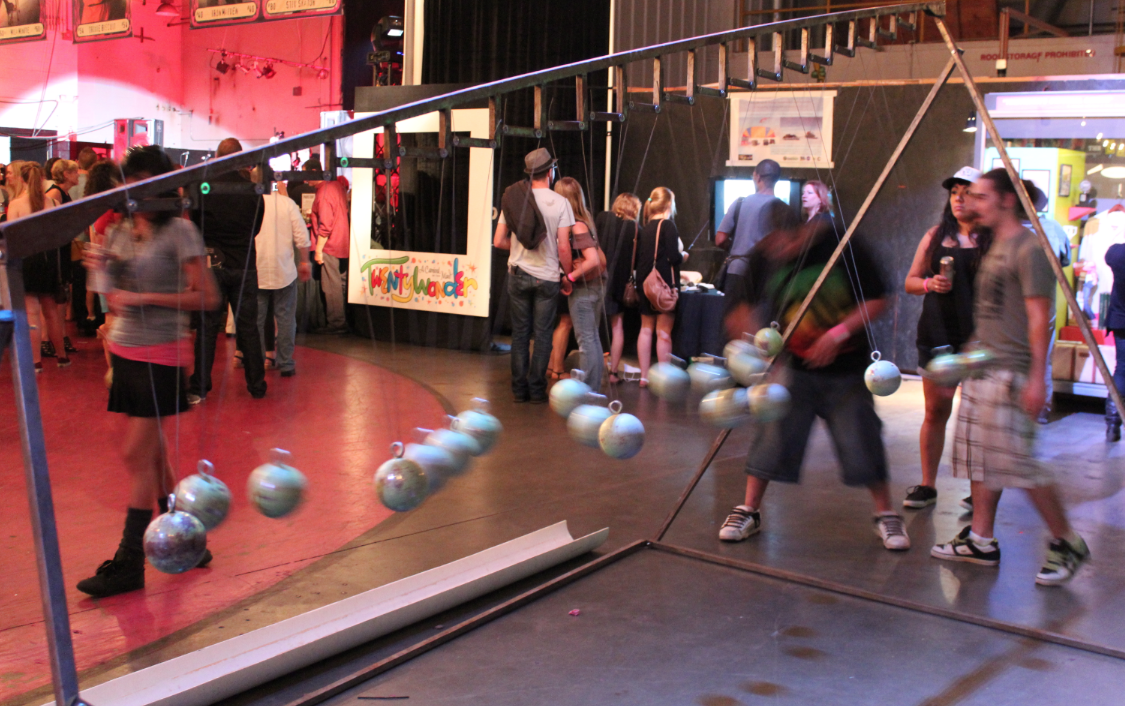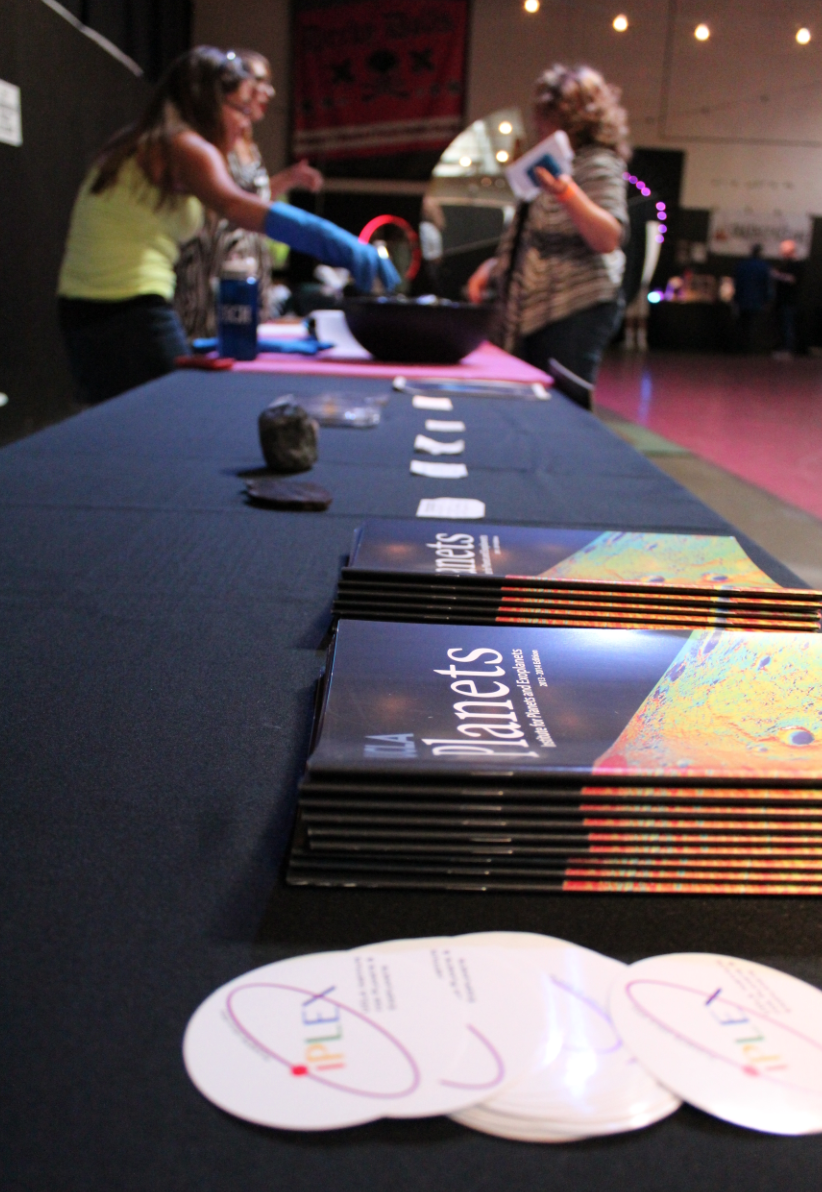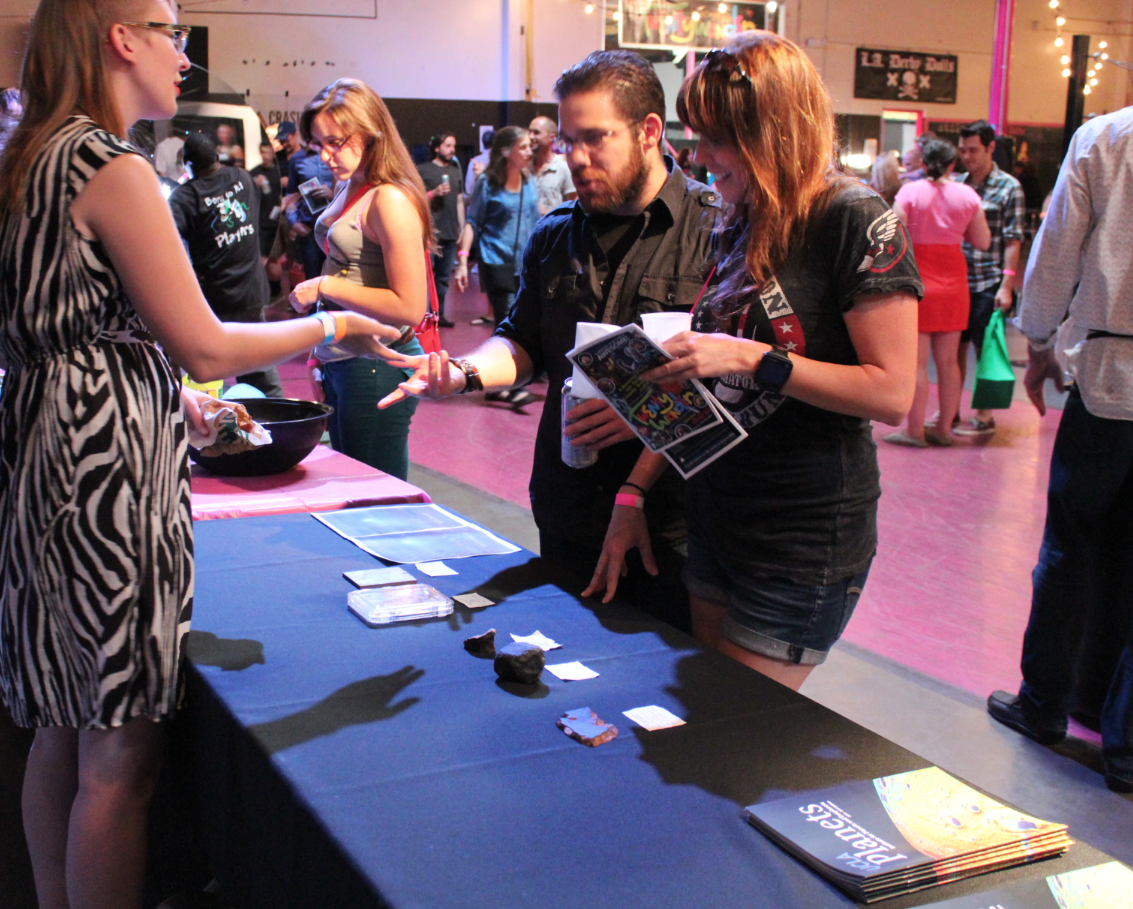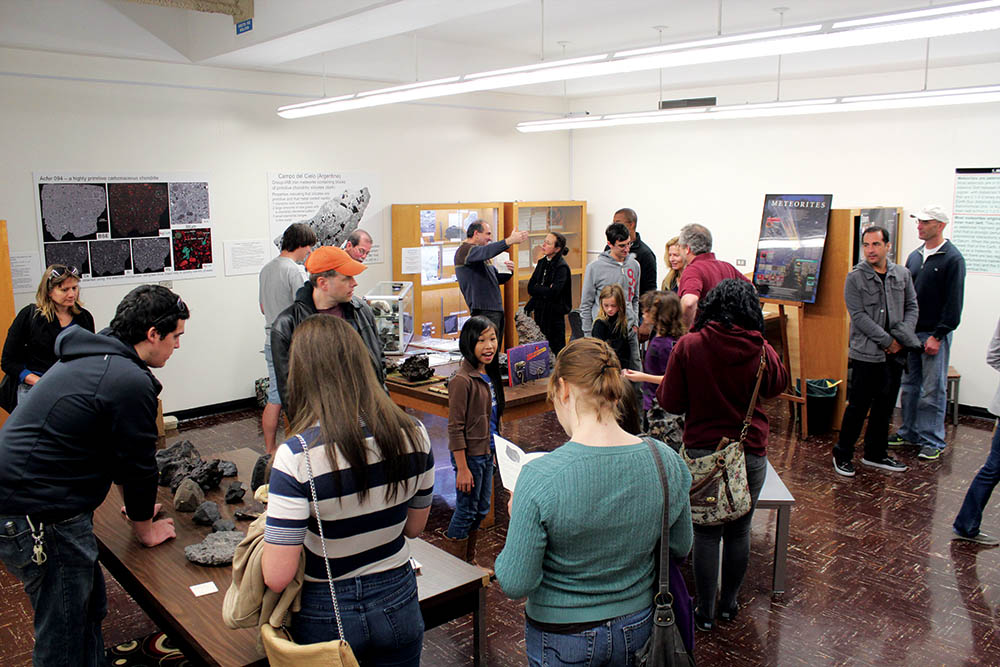 The LA Times and Science Daily report on UCLA Department of Earth, Planetary and Space Science Associate Professor Axel Schmitt’s recent research to determine the age of Mars’ meteorites. Read the full-length articles here:
The LA Times and Science Daily report on UCLA Department of Earth, Planetary and Space Science Associate Professor Axel Schmitt’s recent research to determine the age of Mars’ meteorites. Read the full-length articles here:
July 13, 2013: Twentywonder – A Carnival of the Mind Recap
 On July 13th, 2013, the Institute for Planets and Exoplanets participated in the 3rd annual TwentyWonder, an event to benefit the Down’s Syndrome Association of Los Angeles (DSALA). The iPLEX booth, which showcased a sampling of the UCLA Meteorite Gallery Collection and an informational hands-on DIY comet-building activity, was one of dozens of science, art, and performance acts featured at the event held at the L.A. Derby Dolls Doll Factory in Echo Park. Over 1500 people attended the event that the L.A. Times has called “Awesome! An Event PICK!” Overall, it was an excellent evening full of education presented in a “passive and enjoyable” way, said the event’s creator and DSALA-director, Jim Hodgson. For more information about the event, please visit the Twentywonder official website.
On July 13th, 2013, the Institute for Planets and Exoplanets participated in the 3rd annual TwentyWonder, an event to benefit the Down’s Syndrome Association of Los Angeles (DSALA). The iPLEX booth, which showcased a sampling of the UCLA Meteorite Gallery Collection and an informational hands-on DIY comet-building activity, was one of dozens of science, art, and performance acts featured at the event held at the L.A. Derby Dolls Doll Factory in Echo Park. Over 1500 people attended the event that the L.A. Times has called “Awesome! An Event PICK!” Overall, it was an excellent evening full of education presented in a “passive and enjoyable” way, said the event’s creator and DSALA-director, Jim Hodgson. For more information about the event, please visit the Twentywonder official website.
http://www.youtube.com/watch?v=Fy6MDC58FI0&feature=youtu.be
A combination of dry ice (solid carbon dioxide), karo syrup, ammonia, and dirt simulate what a real comet could be like. Comets with very elliptical orbits remain very cold for most of their orbit, but when passing close to the Sun are warmed enough that some of the ice is removed by a process called sublimation; this results in the characteristic “tail” feature seen on most comets. The dry ice in the video is sublimating away, simulating what happens when a comet (composed of dirt/dust, ice, and some organic materials) passes close to the Sun.
UCLA Meteorite Museum displays extensive collection to the public for the first time
Nearly 50,000 years ago, an asteroid fragment slammed into Earth approximately forty miles east of what is now Flagstaff, Arizona. Upon impact, the celestial projectile shattered into thousands of pieces and created a mile-wide hole now known as Meteor Crater. A 357-pound chunk of that original asteroid now stands center stage in the new UCLA Meteorite Museum.
The Canyon Diablo meteorite was donated to UCLA by philanthropist William Andrews Clark, Jr. upon his death in 1934, becoming one of the first specimens entered into the UCLA Meteorite Collection. While originating from sporadic donations and purchases, it has been Professor John Wasson and researcher Alan Rubin who have spent decades building the collection to its 1500-specimen count today. Together, they have made the collection one of the most extensive in the world, but only recently have these unique bits of our solar system’s history been on display for visitors to admire. “For many years, we’ve collected beautiful exhibit specimens, but kept them locked in an inaccessible cabinet,” Rubin said. “It’s nice to put them on display for other people to see.”
Those expecting the museum to be filled with rows of indistinguishable black rocks may be surprised to learn that there are many types of meteorites, ranging from metallic to stony and everything in between. More than one exhibit emphasizes chondrites, a type of meteorite that is a subject of “endless fascination,” according to Rubin. “Chondrites are composed of thousands or millions of tiny spherules, called chondrules.” While each chondrule tells a different story, they are still very much a mystery. “It appears that chondrules formed from clumps of dust in the solar nebula, the gas and dust cloud that was here before the planets and asteroids formed, and were zapped in a way that is still unknown,” Wasson said.
Not all the exhibits display rocks of extraterrestrial origin, however. One exhibit showcases a collection of melted tektites and Libyan desert glass that formed as a result of meteor impacts. Another exhibit offers tips on how to correctly identify meteorites. Rubin, a world expert in meteorite identification, receives phone calls nearly every day from meteorite-hunting hopefuls. While real specimens occasionally come across his desk, the vast majority of these objects come from Earth. The exhibit, entitled “Meteorwrongs,” features some of the more interesting Earthly samples Rubin has accumulated over the years.
Wasson and Rubin hope that the museum will help educate the next-generation of meteorite researchers. “The museum will be a wonderful teaching resource,” Wasson said. “Our goal is to make it the world’s best scientifically-oriented meteorite museum.” Open to the public weekdays from 9am – 4pm, the museum is located in Geology 3697. Admission is free. The museum, still incomplete, will have mounted informational tablets in its final configuration.
The UCLA Meteorite Museum is supported by the Department of Earth and Space Sciences and the Institute for Planets and Exoplanets. Those interested in providing financial support to the UCLA Meteorite Collection should visit http://giving.ucla.edu/meteorites/.
Watch a video profile of Alan Rubin here. Watch a video tour of the meteorite museum here.





